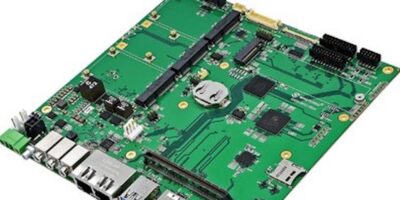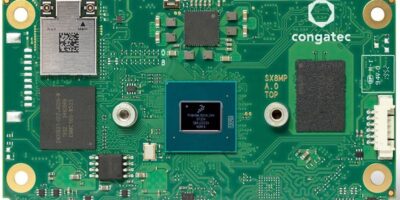The ITX-M-CC452-T10 carrier board has been designed by Winsystems for Type 10 mini module designs and COMeT10-3900 cards.
This is the company’s first Mini-ITX form factor carrier board to complement and support its COMeT10-3900 COM Express Type 10 mini modules. The ITX-M-CC452-T10 carrier platform has industrial components for testing products in development. The reliable carrier board operates at a temperature range of -40 to +85C degrees and with a wide input range of 5.0 to 20V DC.
The industrial COM Express carrier can be used by as a reference point to test and troubleshoot customers’ own or another COM Express Type 10 carrier design, explained George T Hillard, technical sales director, Winsystems. “And, because it supports all interfaces from our recently introduced COMeT10-3900 COM Express modules, these two products can be readily deployed as a complete embedded edge computing platform,” he added.
As an industrial-rated reference board, the ITX-M-CC452-T10 carrier is designed to operate over the full specifications of the COMeT10-3900 COM module so the combination can be proven at temperature. The carrier features dual Ethernet (USB 3.0 and 2.0), four serial ports, three Mini-PCIe expansion options and multiple display options. These are increased when the board is combined with the COMeT10-3900 Express module.
The carrier also has multiple processor options for single, dual or quad CPU cores and various RAM and on-board solid state device (SSD) sizes.
The ITX-M-CC452-T10 carrier supports up to two independent displays: one DisplayPort with 4K resolution and one LCD with backlight and touch control. Additional connectivity and I/O capabilities include four GPIs and four GPOs. There is also built-in storage for microSD, SATA and mSATA.
“The ITX-M-CC452-T10 COM carrier satisfies the rigorous quality and security imperatives for Industrial IoT applications within the medical, industrial automation, military/aerospace and transportation markets,” said Hilliard. “Equally important, it provides product designers with abundant connectivity to distinguish their products in the market and the cost-effectiveness and predictable delivery they require to reduce development risk.”
The ITX-M-CC452-T10 carrier board is supported with technical guidance and BIOS customisation. The ITX-M-CC452-T10 Mini-ITX form factor carrier will become available Q1, 2021, and will ship with access to the accompanying product manual, a carrier design guide, COM modules and thermal solutions (the latter two items sold separately).







